Do you have a question about the Philips 32PFL4507/F8 and is the answer not in the manual?
Discusses installation risks, manufacturer commitment to safety, and general usage tips.
Details essential guidelines and precautions for securely mounting a flat panel display on a wall.
Explains the impact of unauthorized modifications and potential radio frequency interference.
Specifies cable requirements and compliance with Canadian standards.
Lists various trademarks and copyrighted terms related to the product.
Provides guidelines on TV positioning, environmental care, and product recycling.
Details safety warnings regarding installation, ventilation, and electrical connections.
Lists and briefly describes the various functions and features of the TV.
Details the accessories provided with the TV, such as manuals and remote control.
Explains the meaning of symbols used throughout the user manual for different operations.
Explains buttons for power, source selection, picture format, and audio language/mode.
Details buttons for channel navigation, volume adjustment, and muting.
Covers buttons for menu access, navigation, information display, sleep timer, and freeze mode.
Identifies and explains the functions of buttons on the TV's main control panel.
Details various terminals for connecting external devices, audio, and video signals.
Guides on connecting antennas, cables, and set-top boxes for signal reception.
Details AV device connections and safe AC power cord plugging procedures.
Guides the user through selecting the on-screen language and signal source (Antenna/Cable).
Explains how to set the location (Home/Retail) and adjust picture settings during initial setup.
Explains how to turn the TV on and put it into standby mode.
Details how to adjust the TV volume and mute the sound.
Describes how to switch channels using the remote control and number buttons.
Covers watching channels from external devices and using auto picture/sound modes.
Explains how to use the sleep timer and freeze mode functions.
Guides on switching between stereo, mono, and SAP audio modes.
Details how to change the TV's picture aspect ratio for different content types.
Shows how to display detailed information for digital and analog TV channels.
Explains how to hide the information display on the TV screen.
Explains how to open and navigate the TV's main menu structure.
Introduces the main categories within the menu, such as Picture, Sound, and Setup.
Guides the user through selecting optimal picture settings.
Details advanced adjustments for color, contrast, brightness, and noise reduction.
Covers sound modes, equalizer, volume leveling, and speaker output options.
Explains autoprogramming, channel lists, and antenna confirmation.
Covers features like child lock, PC settings, EasyLink, and digital captioning.
Details analog captioning services and how picture settings are displayed.
Details how to lock programs using child lock and rating systems.
Explains how to block specific channels or external input modes.
Guides on setting US movie ratings locks to control program access.
Explains setting US TV ratings and sub-ratings to block specific program elements.
Guides on adjusting PC screen position, clock, phase, and connectivity.
Covers Canadian rating system configuration and PIN code management.
Explains how to operate linked devices using the EasyLink feature via HDMI.
Shows how to view the list of connected devices compatible with EasyLink.
Guides on setting the TV's location to Home or Retail for optimal performance.
Allows selection of the preferred language for the TV's on-screen menu.
Explains how to turn the E-sticker display on or off.
Details how to view JPEG photos from a USB memory stick.
Explains how to play Motion JPEG video files from a USB memory stick.
Guides on how to find the current software version installed on the TV.
Provides steps for downloading and upgrading the TV's software using a USB memory stick.
Explains HDMI connections for the best picture and sound quality.
Details connecting devices using component video for high-quality analog signals.
Guides on using composite video connections for basic quality analog signals.
Explains connecting component analog video for better picture quality.
Details connecting to digital audio devices for enhanced sound output.
Guides on composite analog video connections for standard picture quality.
Guides on connecting a PC to the TV using HDMI, HDMI-DVI, and VGA cables.
Provides instructions for using USB memory sticks for media playback.
Addresses common user questions regarding remote control, initial setup, and program viewing.
Provides solutions for common symptoms like no power or unresponsive control buttons.
Defines various technical terms and acronyms used in the manual.
Provides guidelines for cleaning the TV cabinet and panel, and instructions for servicing.
Details technical specifications for picture type, aspect ratio, and sound features.
Lists specifications for connectivity options, power requirements, and operating temperature.
Discusses installation risks, manufacturer commitment to safety, and general usage tips.
Details essential guidelines and precautions for securely mounting a flat panel display on a wall.
Explains the impact of unauthorized modifications and potential radio frequency interference.
Specifies cable requirements and compliance with Canadian standards.
Lists various trademarks and copyrighted terms related to the product.
Provides guidelines on TV positioning, environmental care, and product recycling.
Details safety warnings regarding installation, ventilation, and electrical connections.
Lists and briefly describes the various functions and features of the TV.
Details the accessories provided with the TV, such as manuals and remote control.
Explains the meaning of symbols used throughout the user manual for different operations.
Explains buttons for power, source selection, picture format, and audio language/mode.
Details buttons for channel navigation, volume adjustment, and muting.
Covers buttons for menu access, navigation, information display, sleep timer, and freeze mode.
Identifies and explains the functions of buttons on the TV's main control panel.
Details various terminals for connecting external devices, audio, and video signals.
Guides on connecting antennas, cables, and set-top boxes for signal reception.
Details AV device connections and safe AC power cord plugging procedures.
Guides the user through selecting the on-screen language and signal source (Antenna/Cable).
Explains how to set the location (Home/Retail) and adjust picture settings during initial setup.
Explains how to turn the TV on and put it into standby mode.
Details how to adjust the TV volume and mute the sound.
Describes how to switch channels using the remote control and number buttons.
Covers watching channels from external devices and using auto picture/sound modes.
Explains how to use the sleep timer and freeze mode functions.
Guides on switching between stereo, mono, and SAP audio modes.
Details how to change the TV's picture aspect ratio for different content types.
Shows how to display detailed information for digital and analog TV channels.
Explains how to hide the information display on the TV screen.
Explains how to open and navigate the TV's main menu structure.
Introduces the main categories within the menu, such as Picture, Sound, and Setup.
Guides the user through selecting optimal picture settings.
Details advanced adjustments for color, contrast, brightness, and noise reduction.
Covers sound modes, equalizer, volume leveling, and speaker output options.
Explains autoprogramming, channel lists, and antenna confirmation.
Covers features like child lock, PC settings, EasyLink, and digital captioning.
Details analog captioning services and how picture settings are displayed.
Details how to lock programs using child lock and rating systems.
Explains how to block specific channels or external input modes.
Guides on setting US movie ratings locks to control program access.
Explains setting US TV ratings and sub-ratings to block specific program elements.
Guides on adjusting PC screen position, clock, phase, and connectivity.
Covers Canadian rating system configuration and PIN code management.
Explains how to operate linked devices using the EasyLink feature via HDMI.
Shows how to view the list of connected devices compatible with EasyLink.
Guides on setting the TV's location to Home or Retail for optimal performance.
Allows selection of the preferred language for the TV's on-screen menu.
Explains how to turn the E-sticker display on or off.
Details how to view JPEG photos from a USB memory stick.
Explains how to play Motion JPEG video files from a USB memory stick.
Guides on how to find the current software version installed on the TV.
Provides steps for downloading and upgrading the TV's software using a USB memory stick.
Explains HDMI connections for the best picture and sound quality.
Details connecting devices using component video for high-quality analog signals.
Guides on using composite video connections for basic quality analog signals.
Explains connecting component analog video for better picture quality.
Details connecting to digital audio devices for enhanced sound output.
Guides on composite analog video connections for standard picture quality.
Guides on connecting a PC to the TV using HDMI, HDMI-DVI, and VGA cables.
Provides instructions for using USB memory sticks for media playback.
Addresses common user questions regarding remote control, initial setup, and program viewing.
Provides solutions for common symptoms like no power or unresponsive control buttons.
Defines various technical terms and acronyms used in the manual.
Provides guidelines for cleaning the TV cabinet and panel, and instructions for servicing.
Details technical specifications for picture type, aspect ratio, and sound features.
Lists specifications for connectivity options, power requirements, and operating temperature.
| Screen Size | 32 inches |
|---|---|
| Display Technology | LCD |
| Backlight Type | LED |
| Refresh Rate | 60 Hz |
| HDMI Ports | 3 |
| USB Ports | 1 |
| Smart TV | No |
| Speakers | 2 x 10W |
| Built-in Wi-Fi | No |


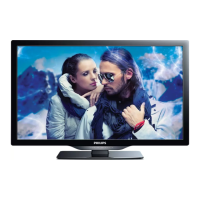

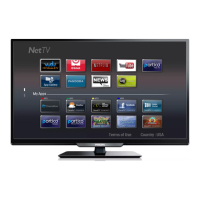
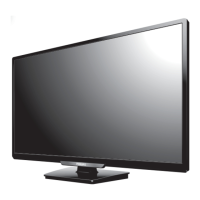


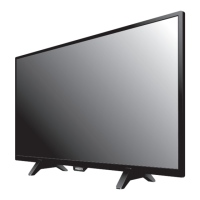
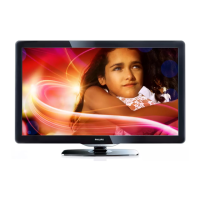


